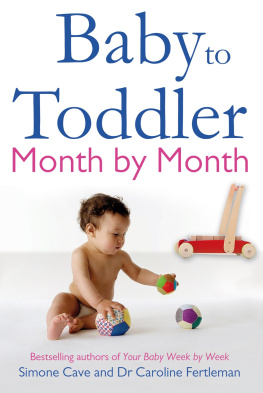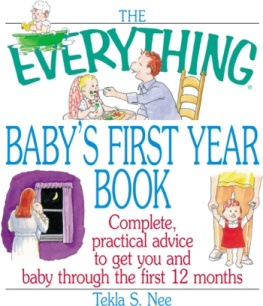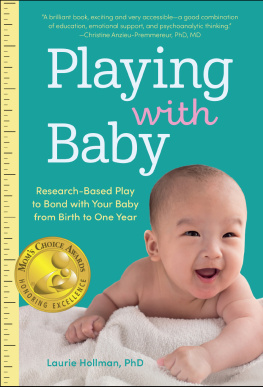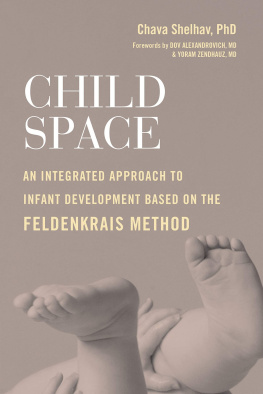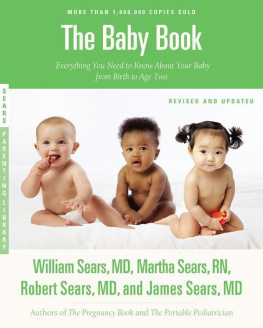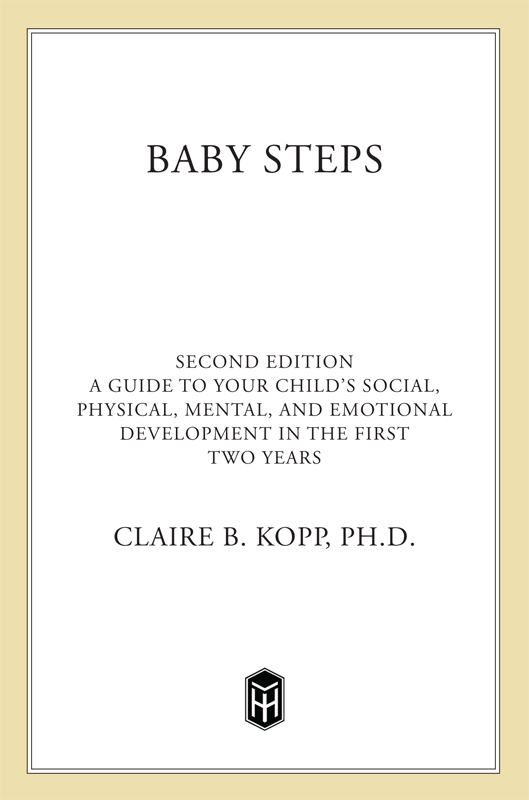
The author and publisher have provided this e-book to you for your personal use only. You may not make this e-book publicly available in any way. Copyright infringement is against the law. If you believe the copy of this e-book you are reading infringes on the authors copyright, please notify the publisher at: us.macmillanusa.com/piracy.
Contents
For my family
Preface
Understanding the behavior of babies and young toddlers: this is the primary focus of the second edition of this book as it was of the first edition. The reason for this new edition is to provide ideas about development that have come from new research on infant behavior, on brain development during the early years, and from changing perspectives about the meaning of early behaviors. There is much that is new and thought provoking, and as might be expected, both new and old controversies exist. I describe all of this and more.
However, I have also retained most of the organization and features of the earlier edition. Parents and other readers liked the first books style.
As you read this book, you will learn about the extraordinary changes that occur from the newborn period to the end of the second year. I describe why babies are able to do certain things and not others, how they think, and what they feel. As you read this book, I hope youll find that your babys behavior makes more and more sense. Its been my experience that parents are best able to take advantage of information when they understand when, how, and why their childs behavior changes.
Another reason for helping parents understand what their babies are experiencing is to take some of the hassle and stresses out of parenting. At one time or another every parent has wondered, Why is my baby acting this way? Although a baby cant talk to us with words, if we know a few things about development, her behavior can tell us much about her needs and wants. In this edition, I have added a section that speaks to some of the stresses of parenting.
Parents who understand child behavior can be more confident about their ability to handle situations. They know they can figure out how to help their child by accurately interpreting the childs signals for comfort, stimulation, or quiet time alone. With efficient decision making, parents can have more time to enjoy their young child. Some parents tell me that knowing what to expect and what not to expect at any age has not only reassured them about how to care for their baby but also made them feel better about the whole experience of parenting. They like being informed when making decisions. Parents who take the time to learn when, how, and why behavior changes know what they can do to help their young child grow and when they need to seek assistance.
Scientific research helps us to know what kinds of behavior to expect when our children are about one month old, six months old, and so on. That is not to say that babies follow a rigid timetable for growth, but rather that behavior usually develops in a fairly predictable fashion. Every baby develops at his own pace and in his own way, but many babies experience similar patterns of growth. In this book I describe the sequences of behavior changes that most young children follow.
You wont find everything about baby or toddler development in this book. The first two years is a period of rapid change and incomparable growth. If someone wrote a book describing every change, it would be so long that parents would not have the time to read it. Instead, what I do here is to highlight some of the most important changes. In the first year I talk about behavior for every month, and then in the second year I look at fifteen, eighteen, twenty-one, and twenty-four months.
As always, I am indebted to the many parents who have shared ideas with me, and who participated in research. I also extend appreciation to graduate students who have been invaluable collaborators in past research: J. Heidi Gralinski, Ph.D.; Bonnie Klimes-Dougan, Ph.D.; Joanne B. Krakow, Ph.D. (deceased); Irma Rder, Ph.D.; Brian E. Vaughn, Ph.D.; and more recently Susan Neufeld, M.A.; Sheri Coulson, Ph.D.; Leslie Fulgham, M.A.; and Jennifer Wishner, Ph.D.
I also appreciate the many colleagues who have enriched my thinking about early development. There are many but I do want to call attention to a few of them. Michael Regalado, M.D., and I have spent many hours discussing and debating issues of parenting. I greatly appreciate his insights. Nancy Eisenberg, Ph.D., friend and colleague, has fostered my interest in the combined roles of temperament and emotion regulation and preschoolers behaviors. Although not directly pertinent to this volume, Dale Berger, Ph.D., has helped me relate developmental issues and various approaches to measurement. Donna Bean, M.A., remains a dear friend and incredible research resource.
Lastly, my deep appreciation to Deborah Brody, my editor at Holt, who with scant notice took manuscript in hand and effectively moved it through the publishing process. Deb and her colleagues (copy editor, designer, production editor) are an impressive team.
My husband, Eugene H. Kopp, continues to be an anchor, critic, and supporter, for which I am grateful.
Early Development
A MINIGUIDE
This miniguide defines development, describes how it comes about, and suggests ways to think about your own childs development. Here, and elsewhere in this book, I emphasize scientists increasing understanding of the early years and also their realization of the variation observed among healthy and normal children and their parents. Yet despite diversity and variability, there are common threads in early development. It is these threads that I highlight in this book, with the goal of helping parents better understand the meaning and significance of the first two years.
Invariably, my descriptions and explanations are couched in a developmental framework on the premise that it is easier to understand a particular behavior if you can see how it fits into the overall scheme of things. Take throwing as an example. Parents of a fifteen-month-old might interpret throwing as a sign of belligerence. It could be, but its not likely. Throwing at this age is simply an activity the toddler enjoys. It gives him a sense of accomplishment and mastery of an object (a ball) while also developing muscle strength in his upper arm.
Of course there are limits: most parents want to establish guidelines as to where a fifteen-month-old may throw things. If you also look at the broader scheme of things, you can see that this is an age when it is developmentally appropriate to encourage behavior that leads to a sense of mastery. So as a parent, it is just a matter of finding the right toy (a ball), the right place (a yard, a playground), and the right time (when someone can monitor the scene) for the toddler who loves to throw.
DEVELOPMENT AND CHANGE
In everyday conversation, the word development has different meanings. We sometimes speak of an event, such as a promotion, as a development. Sometimes we mean a stage of progress; for instance, a childs development as a pianist advanced faster than her music teacher had anticipated. A third use of the word describes a processhow film is changed into snapshots, for example. Which of these definitions is synonymous with what scientists mean when they talk about child development? All of them!
Important changes in a young childs behavior often represent development: the babys first word and the first step are among the most obvious. Development also refers to certain stages of progress, such as the toddler years or the preschool period. The changes that occur during these times are numerous and dramatic and often have implications for parenting. By the end of the second year, for example, young children often use words to describe their feelings (happy, mad) and to talk about their desires (I want). Development also reflects processes that undergo change. An example includes paying attention to ones surroundings. Attention control changes markedly during the first year. In early life, a babys attention is often captured by a stimulus that has strong contrasts of light and dark. By a year of age babies control their attention for long stretches of time despite unwanted diversions.



